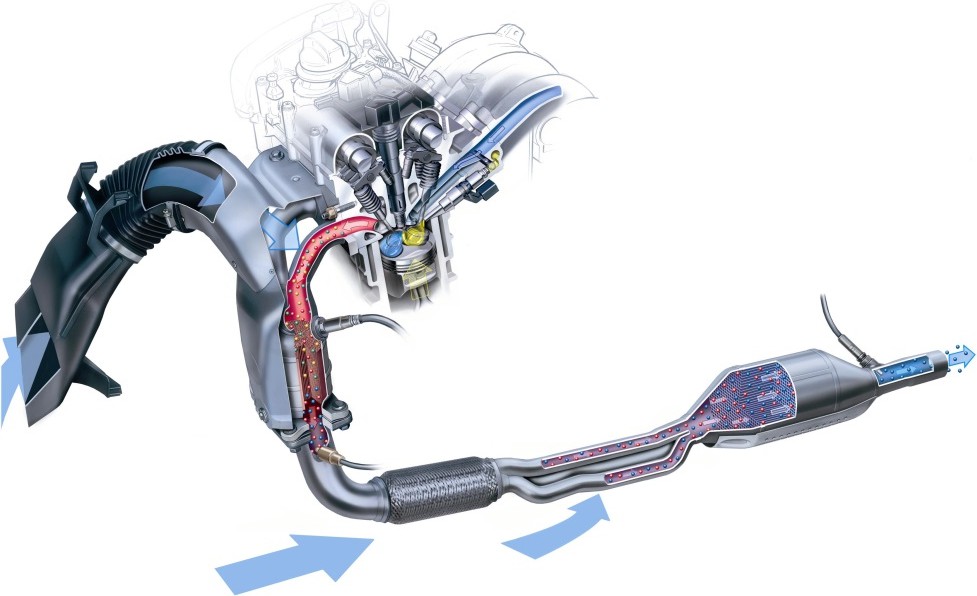The NOx sensor monitors the amount of nitrogen oxide in the engine’s exhaust. If the level of nitrogen oxide is too high, it can cause damage to the engine. The NOx sensor is used to help control the emission of nitrogen oxide from the engine.
A Nox sensor is a special kind of oxygen sensor that is used to measure the amount of nitrogen oxide in a exhaust gas. Nitrogen oxide is a pollutant that is produced by combustion engines, and it can be harmful to human health. The Nox sensor measures the concentration of nitrogen oxide in the exhaust gas and then sends a signal to the engine control unit (ECU).
The ECU uses this information to adjust the air/fuel mixture so that the engine produces less pollution.
Nox Sensor and it's functions
What Happens When a Nox Sensor Fails?
If your car is equipped with a NOx sensor, it’s there to help reduce harmful emissions. The sensor monitors the level of nitrogen oxides in the exhaust gas and adjusts the engine’s timing and fueling to minimize NOx output.
But what happens when a NOx sensor fails?
If a NOx sensor fails, it will usually trigger a check engine light. The engine management system will also go into “limp mode”, meaning that it will run at reduced power to protect the catalytic converter from damage.
In most cases, you’ll need to replace the faulty NOx sensor before you can continue driving normally.
Depending on your car, this may be a simple task that you can do yourself, or it may require the assistance of a qualified mechanic.
How Does a Nox Sensor Work on a Diesel Engine?
As the name suggests, a NOx sensor is used to measure the concentration of nitrogen oxides (NOx) in the exhaust gas of a diesel engine. The sensor consists of a zirconia element that is exposed to the exhaust gas. When NOx reacts with the zirconia element, it produces an electrical signal that is proportional to the concentration of NOx in the exhaust gas.
The output from the sensor is used by the engine control unit (ECU) to adjust the air-fuel ratio and timing of the injectors so as to reduce NOx emissions.
What Causes Nox Sensors to Fail?
There are several reasons that can cause NOx sensors to fail. The most common reason is due to a build-up of deposits on the sensor, which can prevent it from accurately measuring the levels of NOx in the exhaust gas. Another possible reason for failure is damage to the electrical wiring or connectors.
Finally, the sensor itself may simply be worn out and need to be replaced.
What is the Output of a Nox Sensor?
A NOx sensor is a device that measures the concentration of oxides of nitrogen in the exhaust gas of an internal combustion engine. The output of the sensor is an electrical signal that is proportional to the concentration of NOx in the exhaust.

Credit: dieselnet.com
What Does a Nox Sensor Do on a Diesel
A NOx (nitrogen oxide) sensor is used in a diesel engine to measure the level of nitrogen oxides in the exhaust gas. By monitoring the level of NOx, the engine can be tuned to produce less emissions. The sensor is usually located in the exhaust system, upstream of the catalytic converter.
How to Test a Nox Sensor
If your car is starting to have issues with idling, stalling, or poor performance, it may be time to test your NOx sensor. The NOx (nitrogen oxide) sensor is responsible for monitoring the level of nitrogen oxides in the exhaust gas. If these levels get too high, it can cause damage to the engine.
Fortunately, testing the NOx sensor is a relatively simple process that you can do at home with a few tools.
To test the NOx sensor, you’ll need an multimeter and an oscilloscope. First, connect the multimeter to the ground and positive terminals on the NOx sensor.
Then start the engine and let it idle for about 5 minutes. Next, rev the engine and observe the readings on the multimeter. If everything is working properly, you should see a fluctuating voltage between 0.3-0.5 volts when revving the engine.
If you don’t see this fluctuating voltage or if it’s outside of this range, then there’s a good chance that your NOx sensor needs to be replaced.
Nox Sensor Failure Symptoms
If your car is equipped with a NOx sensor and it fails, there are a few things you might notice. The engine light may come on and the car may run rough. You might also notice a decrease in fuel economy.
If you suspect your NOx sensor has failed, the best thing to do is take it to a mechanic or dealership for diagnosis. They will be able to tell you for sure if the sensor needs to be replaced. In some cases, simply replacing the sensor can fix the problem.
However, if the issue is more complicated, further repairs may be necessary.
Conclusion
A NOx sensor is a device that measures the amount of nitrogen oxide in a sample of exhaust gas. Nitrogen oxide is a pollutant that is formed when fuel is burned at high temperatures. The NOx sensor measures the concentration of nitrogen oxide in the exhaust gas and sends a signal to the engine control unit (ECU).
The ECU then adjusts the air/fuel mixture to reduce the amount of nitrogen oxide emitted from the engine.








